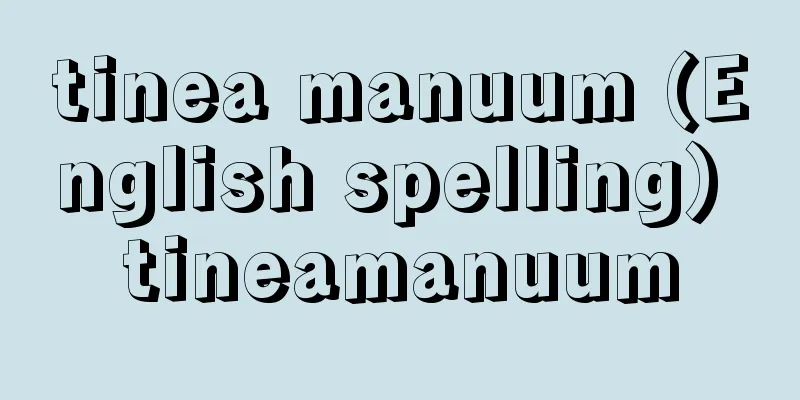Torii School

|
A school of ukiyo-e. It is the only school that has maintained its lineage from the early Genroku period (1688-1704) to the present day. The first Torii Kiyonobu was the first head of the Torii family, and there have been nine generations up to the current head, Kiyomitsu (1938-). It is said that the school began in 1687 (Jokyo 4) when Torii Kiyomoto (years of birth and death unknown), a female actor turned theater sign painter, moved from Osaka to Edo with his son Kiyonobu and painted theater signs for the Ichimura Theater in 1690 (Genroku 3), and the foundations of the school were solidified by Kiyonobu, who was active from the Genroku period to the early Kyoho period (around 1720). Together with his son Kiyomasu the First, Kiyonobu devised and established the heroic painting style of gourd-footed and earthworm-painting, which was suitable for sign paintings, and this has been passed down unbroken as the school's greatest characteristic. Like other ukiyo-e schools, the Torii school also produced single-sheet prints and woodblock prints, but it is believed that the school was able to survive so long because it had close ties with Edo theater companies from the time the school was founded and had a near monopoly on signboard and ranking prints. The second head of the Torii family was Kiyomasa II, and the third was Kiyomitsu I. The fourth head, Kiyonaga, was a student of Kiyonaga, and initially painted actor pictures in the Torii school, but he soon established his own style of painting beautiful women, becoming one of the leading beauties painters in ukiyo-e alongside Suzuki Harunobu and Kitagawa Utamaro, making him a unique figure within the school. The fifth head was Kiyomitsu II (originally named Kiyomine), the grandson of the first Kiyomitsu, and from this point on the school became painters specializing in signboard pictures and ranking pictures. Other major painters in the school include Kiyonaga II, Kiyosige, Kiyohiro, and Kiyotsune. [Hidetake Asano] [References] | | | |©Shogakukan "> Torii School / Brief family tree Source: Shogakukan Encyclopedia Nipponica About Encyclopedia Nipponica Information | Legend |
|
浮世絵の一流派。浮世絵諸派草創期の元禄(げんろく)(1688~1704)期から、今日に至るまで画系を保った唯一の流派。初代鳥居清信(きよのぶ)を鳥居家初代として、現清光(きよみつ)(1938― )まで9代を数える。 1687年(貞享4)女方役者出身の芝居看板絵師鳥居清元(生没年未詳)が、子の清信とともに大坂から江戸に移住、1690年(元禄3)に市村座の芝居看板を描いたのが始まりと伝え、元禄期から享保(きょうほう)前期(1720ころ)まで活躍した清信によって一派の基礎が固まった。清信は子の初代清倍(きよます)とともに、瓢箪足(ひょうたんあし)・蚯蚓描(みみずがき)という看板絵にふさわしい勇壮な描法をくふうして定着させ、これは同派の最大の特徴として連綿と受け継がれている。鳥居派は他の浮世絵各派と同様、一枚絵・版本にも筆をとっているが、派の成立時から江戸芝居各座と密接な関係をもち、看板絵・番付絵をほぼ独占したために長い命脈を保つことができたものと思われる。 鳥居家2代目は2代清倍、3代目は初代清満(きよみつ)。4代目の清長はその門人で、初めは鳥居派流の役者絵を描いていたが、まもなく美人画に独自の様式を確立、鈴木春信(すずきはるのぶ)、喜多川歌麿(きたがわうたまろ)とともに浮世絵を代表する美人画家となった点、同派中異色の存在といえる。5代目は初代清満の孫の2代清満(初名清峰)で、これ以降一派は看板絵・番付絵専門の絵師となった。同派のおもな絵師にはほかに2代清信、清重、清広、清経(きよつね)らがいる。 [浅野秀剛] [参照項目] | | | |©Shogakukan"> 鳥居派/略系図 出典 小学館 日本大百科全書(ニッポニカ)日本大百科全書(ニッポニカ)について 情報 | 凡例 |
Recommend
Sales book - Uricho
〘Noun〙 A general term for a ledger in which goods ...
Responsive Eye Exhibition - Outou Surumeten
…The word “op” comes from the word “optic” or “op...
Abhidharmakośa (English spelling) Abhidharmakosa
...The Abhidharmakośa (Abhidharmakośa) is a Buddh...
Stock dividends - Kabuhai
...When a corporation issues new shares after its...
Ctenitis subglandulosa (Hance) Ching
An evergreen perennial fern of the Dryopteris fami...
François Joseph Victor Broussais
1772‐1838 French physician. Born in Saint-Malo to ...
Osaka Electric Tramway
…Following the government-run railway between Kyo...
Brooks, Richard
Born: May 18, 1912, Philadelphia, Pennsylvania [Di...
Words of wisdom
A haiku poet of the early Edo period. Ikenishi. A...
Tournesol
...Sown in spring for use in flower beds, it bloo...
Audience - kankyaku (English spelling) audience
A person who watches a performance. There are four...
Edoza
A school of haiku from the mid-Edo to the end of ...
Culture hero
A mythological term for beings in mythology who b...
Grotesque - Grotesque (English spelling)
Generally, it is an adjective meaning something b...
King William's War
A war between Britain and France fought in the No...









